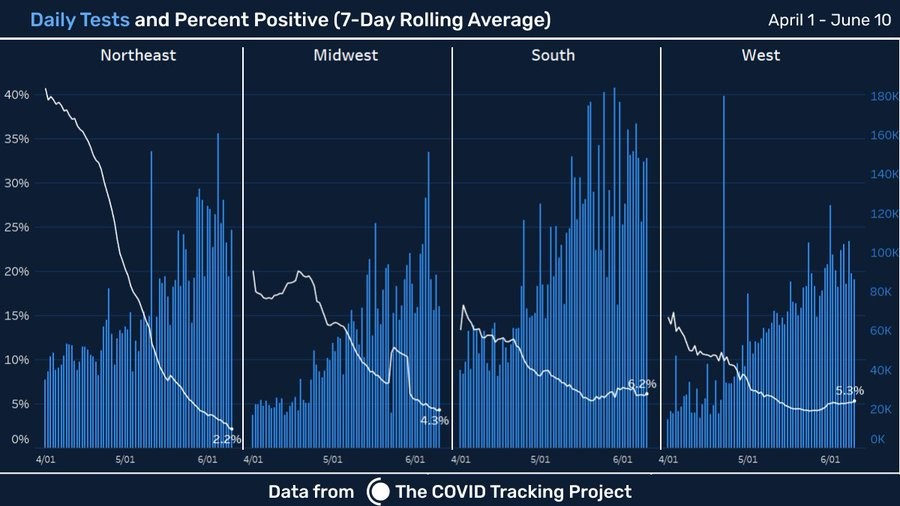Week in Washington is brought to you by Michael Cohen, PhD. Tune in each week to read the latest on healthcare policy and get a glimpse of what’s on the horizon.
Week in Washington:
6/11/2020
COVID Numbers:
This week continued a trend of mixed COVID news. The overall number of US deaths continued to decline; however, a few states have been flagged as concerning, given the increase in hospitalizations and the increase in the percent of tests being given that are coming back as positive (increasing COVID positive rates being a sign of increasing number of infections) in specific parts of the country.

Concerning States:
It’s important to differentiate, levels versus rates when discussing COVID cases. A number of states (for example Maryland) has high rates of COVID cases but the number of new cases is declining. Conversely, some states (for example Arizona) has had increases in recent weeks on the proportion of the population with COVID; however, those increases are coming in an environment with a relatively low level of infections. Typically, when news articles have been appearing on COVID “hot spots” the focus has been on trends, not levels. Vox highlights 8 states that are having troubling trends (increases), chief among them, Arizona. Arizona has had a 211% increase in the number of cases AND an increase in the percent of positive tests (meaning the increase in cases is not only due to a greater number of tests).
Good News: On the bright side, late June is expected to be extremely hot for most of the United States, which may slow the virus’ spread.
COVID Impact:
Wakely released two analyses this week on the potential impact of COVID. The first was an analysis on the cost of COVID treatment (including deferred care) which can be found here. The second, analysis on costs associated with testing can be found here.
Economy:
The Federal Reserve released projections this week on the US economy. The Federal Reserve expects a slow recovery, with unemployment projected to fall to 9.3% by the end of this year and 6.5% by the end of 2021. As a sign of their concern over the economy, the Federal Reserve pledged to keep interest rates at zero most likely through 2022.
IRS Rule:
The IRS released a proposed regulation that would allow employees to use their health reimbursement arrangements (HRAs) on direct primary care and health care sharing ministries. The rule could increase enrollment in these arrangements, thereby reducing enrollment in the individual market. The comment period closes in 60 days.
Previous editions:
6/4/2020: Week in Washington
5/28/2020: Grim Milestone
5/21/2020: Week in Washington
5/14/2020: Week in Washington
5/7/2020: Week in Washington
4/30/2020: News on the Last Week in April
4/23/2020: Week in Washington
4/16/2020: Waiting on Congress